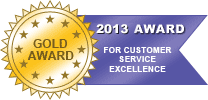Search Results for: best
A Delicious Theme for All Seasons
We have started 2013 by releasing a delicious theme for gourmets. Now we decided that it’s the perfect time to release a new theme for business owners from the food related industry. Seasons is our new theme that suits perfect for restaurants, bars or cafe’s . Seasons Demo Theme Info Responsive Design The layout of this theme automatically adapts to fit on any screen resolution, be it desktop or mobile devices (iPhone, iPad). Unique Menu Template In the Seasons theme you can easily showcase all the food items on the menu page. Food items can be added through the Custom Post Type functionality. Food Menu Items The theme includes two menu templates: one that will display food categories sorted alphabetically, and a widgetized template, in which you can order food categories as you want: Arrange Food Categories in Menu Page Blog Easy The built-in Blog Template and numerous custom widgets allows you to use the theme beyond its limits. You can very easily run separately a blog to keep in touch with your visitors about news, events and why not even about new food additions to the menu. Blog Template P.S. This is also the first theme that uses the newly re-designed theme page on our website. Do you like it? For more detailed features, see the theme’s page or check out the live demo of this theme. Continue reading
Sweet Plugin: TablePress, the successor to WP-Table Reloaded
About two years ago (yeah, really!) I reviewed the WP-Table Reloaded WordPress plugin on our show The Sweet Plugin. After a rebranding and reworking of the code, WP-Table Reloaded is now TablePress . The developer Tobias relaunched the plugin, renamed it with a much better name, and revamped a number of the plugin’s features. One of the biggest improvements has to be the all tables view, which feels almost exactly the same as the edit posts and pages WordPress screens do. Honestly, the closer any plugin or theme can get to WordPress core UI, or feeling like a real part of WordPress, the better it is. Adding and editing tables feels better too. A lot of what was there before is still in place, but nicer. Manipulating table content feels much better; you can drag and drop rows and columns around and change the display order of table cells with one click. This sort of table manipulation would have been much more time consuming under the old WP-Table Reloaded plugin. TablePress makes the table shortcodes much more obvious too. Each table management screen includes the table’s shortcode at the top of the screen, and they’re quickly available from the all tables screen too. TablePress also implements something I don’t remember seeing in WP-Table Reloaded, and that’s the ability to choose where in the WordPress dashboard the TablePress menu is located. This is one of those options which I could see popping up in any of the more complex WordPress plugins out there. Let users choose whether the menu item displays right below comments, at the bottom below settings, within the tools menu, and so on. I think this is an approach I can get behind — again, only in plugins that potentially warrant prominent menu placement in the first place. Where to grab TablePress You can download TablePress from the WordPress.org plugin directory, and based on everything I’ve seen there’s really no reason to hold back. Your tables will need to be exported from the old plugin and imported into the new plugin, but really that seems like a pretty seamless process. Tobias also runs TablePress.org , a nice resource for using the plugin. Have you switched over to TablePress yet? What do you think of the new, rebranded, and updated WordPress plugin? You just finished reading Sweet Plugin: TablePress, the successor to WP-Table Reloaded on WPCandy . Please consider leaving a comment! The post Sweet Plugin: TablePress, the successor to WP-Table Reloaded appeared first on WPCandy . Continue reading
Reader theme review: Minimal, but not in a lazy way
Reader is a theme by new theme shop WP Minima , a brand which sells entirely on ThemeForest at the moment. They’ve released two themes so far, one free and one paid. This is the paid theme, which costs $35 . Reader, being both new and minimalistic, caught my eye last week. A lot of the time, theme designers will put something together and call it minimal, almost as an excuse to not put much thought into what’s designed. Or to leave things kind of plain. At least that’s the impression I get when looking at some WordPress themes that get released. In this case, I think it’s clear that WP Minima put time into Reader and made real decisions. I don’t agree with all of them, but there’s a consistent, strong design aesthetic here that doesn’t come across as what I’ll call “lazy minimal”. It’s minimal, in a good way. Digging further in Digging further into the theme, there are design decisions I like as well as those I don’t. The first subtle bit I liked was the fuzzy hover effect on the blog’s title. It’s a neat, happy effect that makes the title of the blog a little more interesting. A lot of themes will make their titles and site headings interesting by dropping in a logo – a logo, of course, that won’t make any sense on a user’s site once they get rolling with the theme. This design touch makes any blog title interesting, just be tweaking the text itself a little. When rolling over the title of the site, it gets all fuzzy. Is it weird that I find things like that really nice? That said, some of the interactions aren’t as great. There are two sliding effects worked into the theme that bug me. Reader hides things behind a click-trigger, which requires the visitor to click to view (what I consider) important information. These triggers are in two places: the site description in the header, and every post’s date and comment counts on archive pages. In both cases, as a visitor, I’m not very likely to click to see that information. That information is something I’ll see and will catch my eye as I scroll down the page. Requiring user action in these areas is really the biggest detractor toward using this theme, in my mind. Plugin included with the theme The Minima Shortcodes plugin that came along with the theme is half good and half “meh”. Obviously dropping shortcodes into a plugin is a big plus, and that they seem intended to work with any Minima theme when it’s installed is a great idea. The plugin’s positive offerings include a few nice call-out styles. There’s a message box, an intro, some highlighting, and so on. With these classes matched across their offering of themes it has its usefulness. I would also like to see the plugin with an option to drop in minimal styles (no pun intended) so the shortcodes can maintain their general look and feel even when other themes are active. The intro and message shortcodes in user within a post. They’re subtle, but noticeable. Then there’s the less exciting side of the plugin, which is a set of shortcodes clearly included for average users. There’s one that forces line breaks so they aren’t stripped out by the WordPress editor, for instance. I should say these types of shortcodes aren’t exciting to me, but might be a breath of fresh air to users who have complained about the WordPress WYSIWYG editor before. So I don’t really consider these a negative inclusion, but more of a “meh”. What Reader really gets right Some of my favorite things about Reader, honestly, are things that it just gets right . There aren’t any nasty theme settings screen with the WP Minima branding on it, which is a relief quite honestly. In addition, the theme acts as you’d expect it to when it comes to basic WordPress features. Sidebars, widgets, menus, even background colors and the theme customizer operated exactly as I would have wanted. It sounds silly, both when discussing that and writing it down here, but it’s truly shocking how many themes out there just fall apart under these basic sanity checks. Seriously, more theme developers should really dive in and make their themes work with the theme customizer. It makes working with themes so much better. I also really like the implementation of the featured images. Having them fit across the post block gives it a good feel, and would keep me excited to find – or take, rather – images to fit with each post. Post formats in Reader seem to each be styled uniquely, which is great to see any theme doing. I’m also partial to theme-specific WYSIWYG editor styles, which Reader pulls off near perfectly. Final thoughts Reader is a solid minimal blogging theme, and has gone on my list of themes to recommend to anyone looking to just get a site up and get writing. It’s not a perfect theme, but I think I would still rank it up there with the solid simplicity of the default Twenty Ten through Twelve themes, albeit with its own style. Given that Reader is only the second theme to come out of WP Minima so far, I’d say it’s a shop to keep an eye on. Oh, and if you’d like to hear further thoughts on Reader — and other awesome and sometimes-not-so-awesome WordPress themes — listen to the latest episode of the Theme Show podcast . This review was completed using a copy of Reader provided to WPCandy by WP Minima. You just finished reading Reader theme review: Minimal, but not in a lazy way on WPCandy . Please consider leaving a comment! The post Reader theme review: Minimal, but not in a lazy way appeared first on WPCandy . Continue reading
WPCandy Roundtable #3: WordPress Meetup Discussion with 4 co-organizers
Let’s talk about WordPress meetups! On this episode of The WPCandy Roundtable Podcast, I asked four awesome WordPress meetup co-organizers to chat about what makes a quality meetup and how they do what they do. We also went over what they would recommend to new WordPress meetup organizers. Joining me on the podcast are Angie Meeker (Columbus, Ohio WordPress Meetup), Brian Richards (Grand Rapids, Michigan WordPress Meetup), Steve Zehngut (Orange County WordPress Meetup) and Aaron Jorbin (Washington, D.C. WordPress Meetup). These folks know what they’re talking about. Still not sure about listening? Steve Zehngut and Aaron Jorbin each co-organize events with a full roster count of over 800 and 1,200, respectively. That’s a couple of times the size of most large Word Camps , folks. Download: Roundtable-Podcast-003-Angie-Meeker-Brian-Richards-Steve-Zehngut-Aaron-Jorbin.mp3 MP3 file (27.2 MB) Audio RSS Feed We discussed a number of issues that will face new meetup organizers. Some of my favorites this episode were: What’s the best advice for brand new meetup organizers who haven’t started their event yet? What sort of format does your meetup use? Where do you find your meetup speakers? How do you keep your community involved when not meeting? When does your group meet? Do you find weekdays or weekends to be best for meetings? We talked for about 50 minutes and had a great time. If you’re interested in running — or improving — your own WordPress meetup I highly recommend this podcast. What about your WordPress Meetup experience? I know for a fact that plenty of you organize the meetups in your city too. I’d love to have your comments on these topics as well. What did you find helpful when you started your event? If you aren’t organizing your meetup, and also don’t have a meetup in your area, what’s holding you back? Have you ever considered running it for the community in your city? You just finished reading WPCandy Roundtable #3: WordPress Meetup Discussion with 4 co-organizers on WPCandy . Please consider leaving a comment! The post WPCandy Roundtable #3: WordPress Meetup Discussion with 4 co-organizers appeared first on WPCandy . Continue reading









